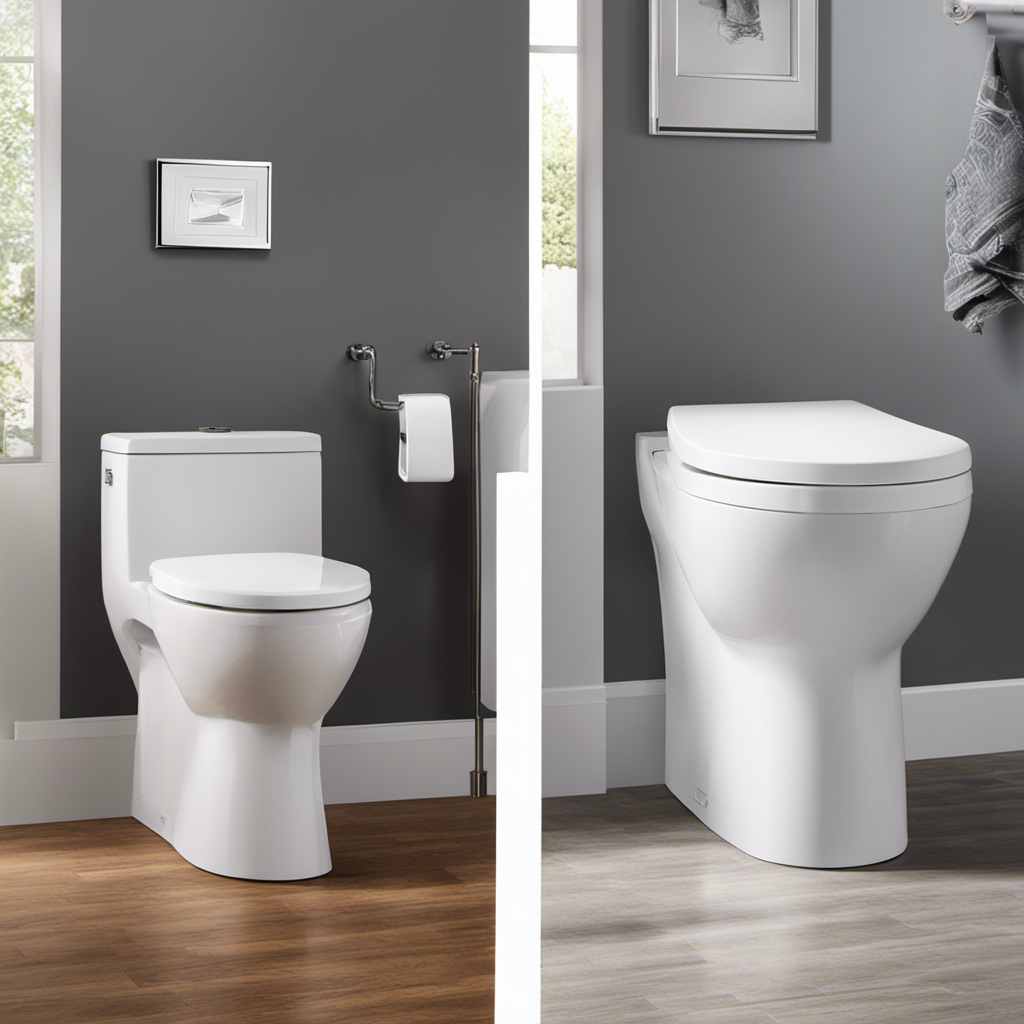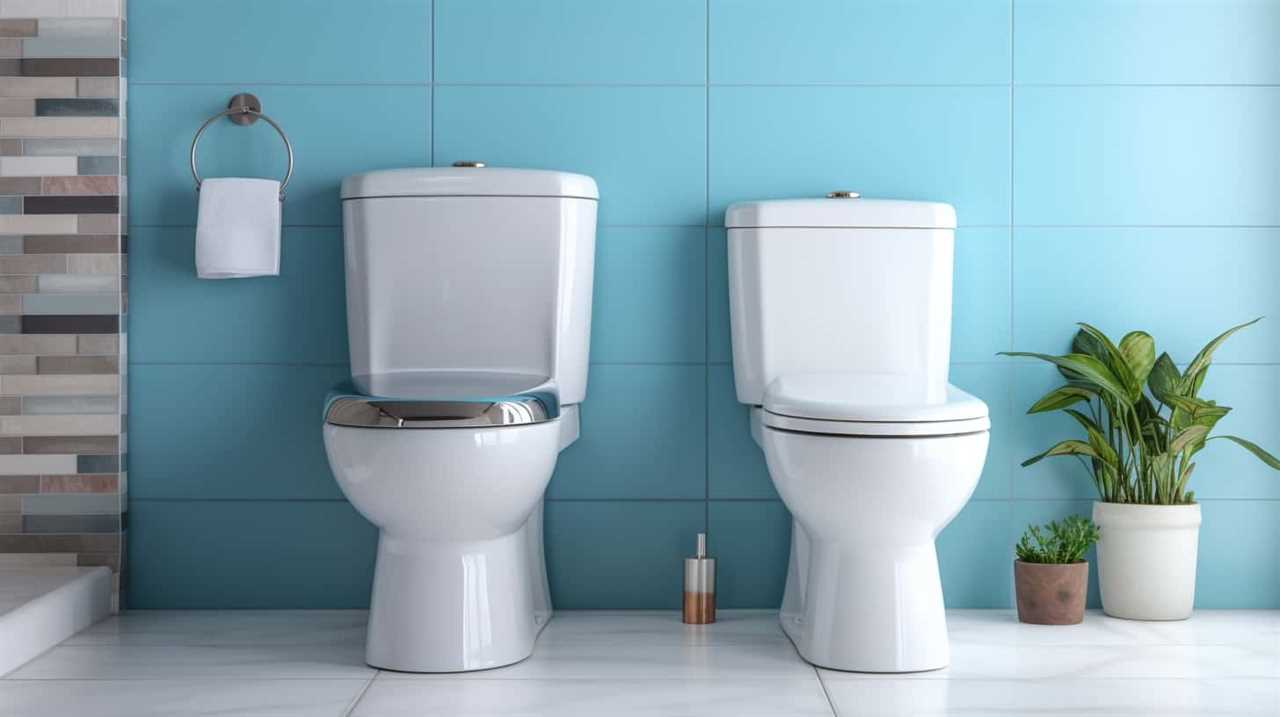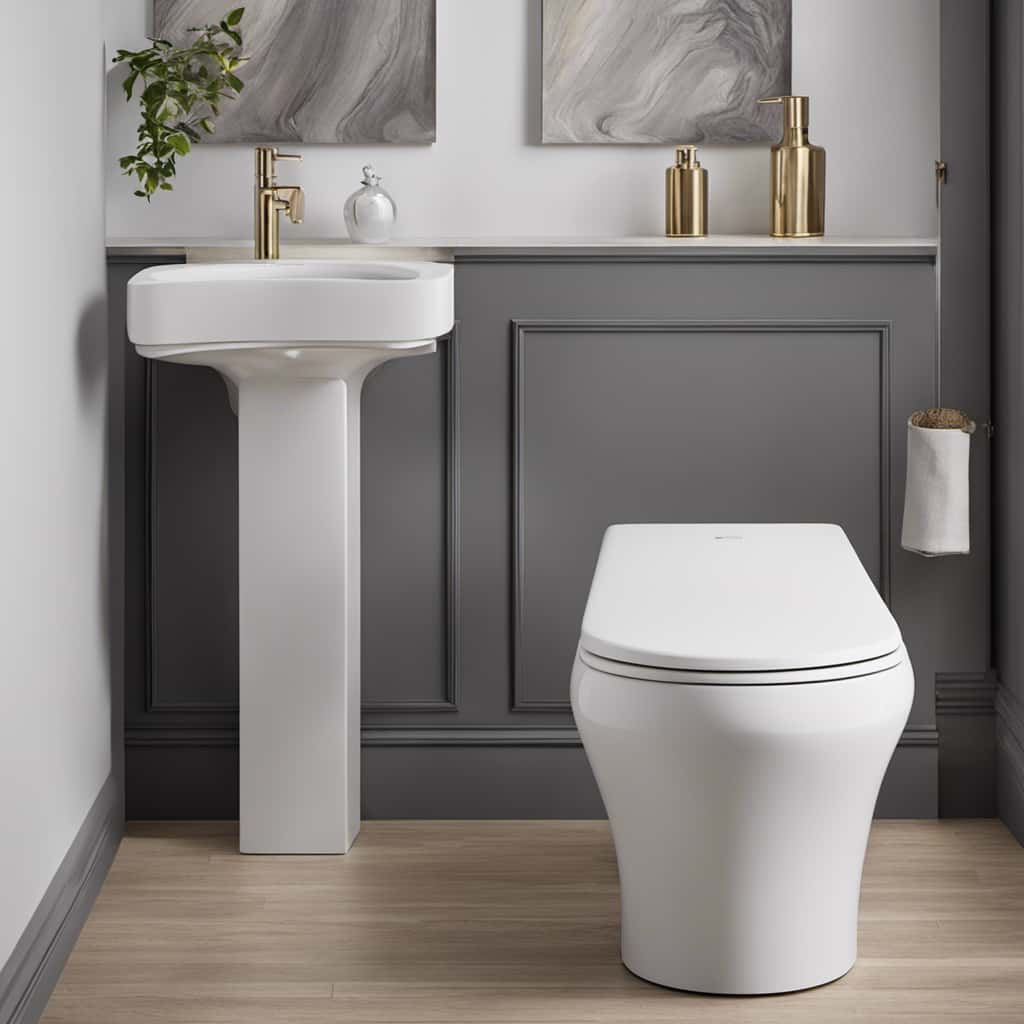Have you ever wondered why your toilet water turns yellow?
In this informative article, we will explore the causes and solutions for this common household problem.
Mineral deposition, rusting pipes, contamination of the water pipeline, and leaving the tap open for too long are just a few of the culprits behind yellow water.
But fear not! There are various solutions available, from scrubbing off mineral deposits to installing water softening systems.
Get ready to say goodbye to yellow water and hello to a clean and clear toilet.
Key Takeaways
- Mineral deposition in the toilet tank or bowl due to hard water or improperly treated water is a common cause of yellow toilet water.
- Rusting of pipes and bolts in the toilet can also lead to yellow water, and cleaning or replacing these rusted components may be necessary.
- Contamination of the water pipeline with sand or sanitary waste can result in yellow water in the toilet, and repairing or addressing the source of contamination is essential.
- Leaving the tap open for a long time can lead to bacterial growth and yellow water, while build-up of salts in a water softening system can cause sediment and discoloration. Regular cleaning and maintenance can help prevent these issues.
Causes of Yellow Water in the Toilet
One of the main causes of yellow water in the toilet is mineral deposition in the toilet tank due to hard water or improperly treated water.
When hard water flows into the toilet tank, minerals such as calcium and magnesium can accumulate over time, resulting in yellow water. This mineral deposition can also occur if the water is not properly treated, allowing impurities to build up in the tank.
Preventing yellow water in toilets requires addressing the root cause. Regular cleaning and maintenance can help remove mineral deposits and prevent further build-up.
Installing a water softening system can also be effective in reducing mineral content in the water.
Solutions to Mineral Deposition in the Toilet Tank
Regular cleaning and maintenance can help prevent mineral build-up in the toilet tank. This is essential for ensuring the optimal functioning of the toilet and preventing any potential issues caused by mineral deposits.
To effectively remove mineral deposits, consider the following solutions:
-
Use a toilet bristle brush to scrub off mineral deposits in the toilet tank or bowl. This will help break down and remove any build-up.
-
Flush the toilet multiple times to clear away any residues. This will help dislodge any remaining mineral deposits and ensure a clean tank.
-
Consider installing a water softening system to prevent future mineral deposits. This can help reduce the mineral content in the water, preventing build-up in the tank.
Solutions to Rusting of Bolts and Pipes
To address the rusting of bolts and pipes in the toilet, individuals can clean or replace them as necessary.
Cleaning rusted bolts requires effort and may loosen the bolt’s fitting. However, it can be done by using a brush or a rust dissolver to remove the rust. Regular cleaning and maintenance can also prevent rust build-up.
On the other hand, replacement of rusted bolts is a relatively easier solution. Individuals can find replacement bolts in the toilet’s replacement parts list or in the market. It is important to ensure the availability of replacement bolts before starting the replacement process.
Solutions to Contamination of the Water Pipeline
Repairing the water pipeline or addressing the source of contamination becomes necessary when yellow water appears in the toilet tank. This issue can be alarming and unpleasant for homeowners, as it indicates a potential problem in the water supply. To tackle this issue effectively, consider the following solutions:
-
Identify the source of contamination: It is crucial to determine the cause of the yellow water. Check for broken municipal pipelines that may allow sand or sanitary waste to seep into the water supply. Additionally, inspect the household plumbing system for any leaks or cross-contamination.
-
Consult a professional: Once the source of contamination is identified, it is advisable to seek the assistance of a qualified plumber. They can assess the situation accurately and provide appropriate solutions to repair the water pipeline or address the contamination source.
-
Implement preventive measures: To prevent future occurrences of yellow water, consider installing water filtration systems or water softeners. Regular maintenance and cleaning of the water supply system can also help maintain its integrity.
Addressing the contamination source promptly is essential to ensure clean and safe water in the household. Consulting professionals and implementing preventive measures can help resolve the issue effectively.
Other Problems and Solutions
Leaving the tap open for an extended period can result in bacterial growth, leading to yellow water in the toilet tank. One common type of bacteria that can cause this discoloration is iron bacteria. These bacteria thrive in environments with high levels of iron and can produce a yellow or orange color in the water.
They are commonly found in well water or in areas with high iron content in the water supply. Bacterial growth can be prevented by ensuring that the tap is not left open for too long and by regularly cleaning and disinfecting the toilet tank.
If yellow water persists despite these measures, it is recommended to consult a professional plumber who can assess the situation and provide appropriate solutions.
Conclusion: Maintaining Clean and Clear Toilet Water
Regular cleaning and maintenance, along with the use of water softening systems, can help maintain clean and clear water in the toilet.
By regularly cleaning the toilet tank and bowl, any mineral deposits or rust can be removed, preventing the water from turning yellow.
Additionally, water softening systems can be installed to reduce the mineral content in the water, further preventing discoloration.
Maintaining hygiene in the toilet is crucial to preventing bacterial growth. Regular cleaning and disinfection can help keep the water free from harmful bacteria, ensuring a healthy and safe environment.
Preventing bacterial growth is essential not only for maintaining hygiene but also for the overall health and well-being of the household.
Conclusion
In conclusion, maintaining clean and clear toilet water is essential for a hygienic and aesthetically pleasing bathroom. By addressing the causes of yellow water, such as mineral deposition, rusting, and contamination, one can ensure a fresh and clean toilet.
It is interesting to note that according to a study conducted by the American Water Works Association, approximately 30% of waterborne illnesses are caused by contaminated water in the household. This statistic highlights the importance of taking proactive measures to prevent any water-related issues in our homes.










